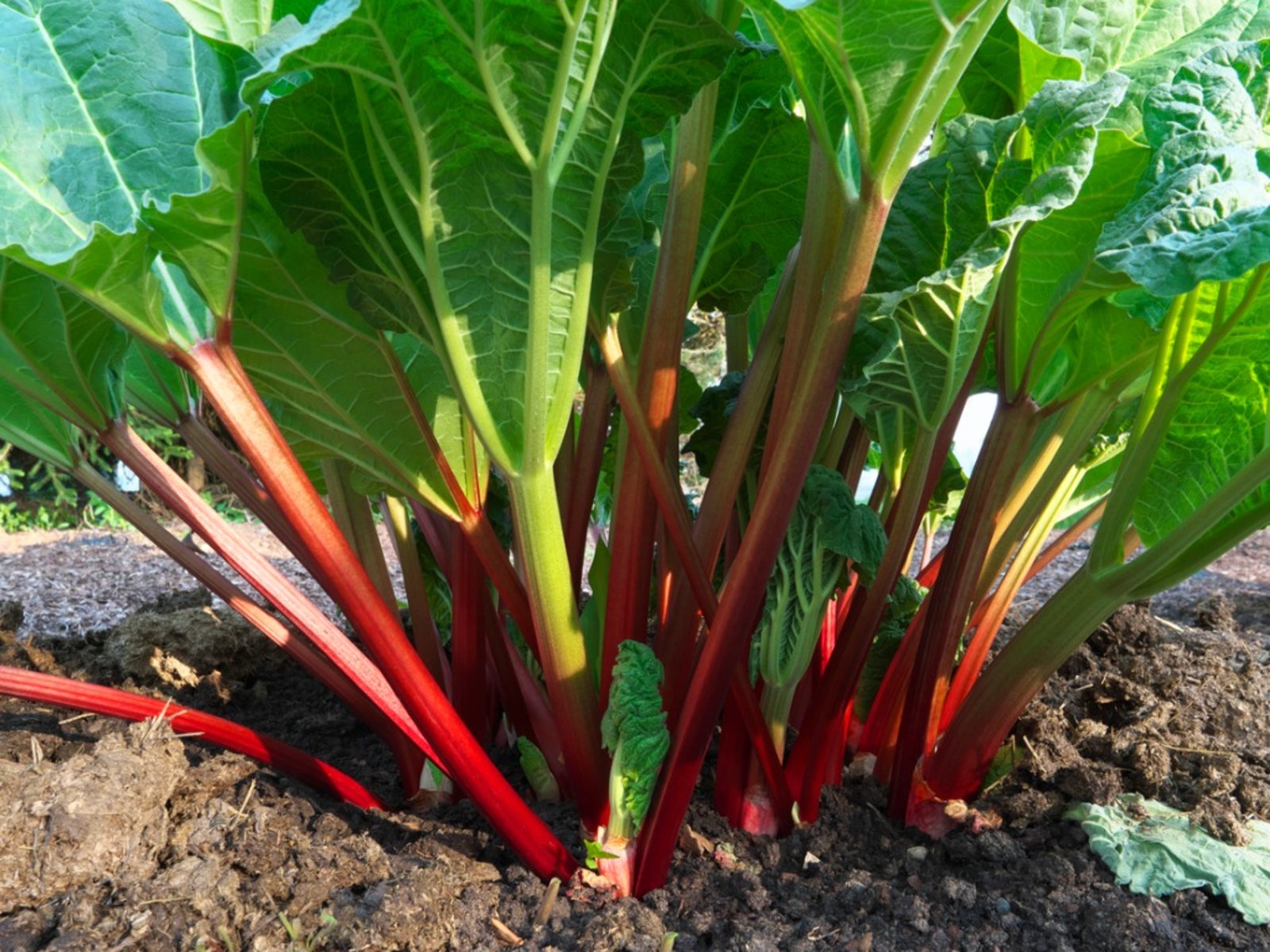Dividing Rhubarb Plants: How And When To Divide Rhubarb

I'm not a pie girl, but an exception can be made for rhubarb strawberry pie. Actually, anything with rhubarb in it is easily coaxed into my mouth. Maybe because it reminds me of the good old days with my great grandmother who made the flakiest pie crust redolent with butter, filled with scarlet berries and rhubarb.
Her stalks seemed to require very little care and came up reliably year after year, but realistically, I'm sure dividing rhubarb plants was one of her garden chores. So the question is, how and when to divide rhubarb?
Why is Rhubarb Plant Division Necessary?
Rhubarb leaf stalks and petioles are used primarily in sweet treats and, are hence, regarded as a fruit. Actually, rhubarb is a vegetable, but due to its high acidity, lends itself nicely to pies, tarts, jams, and other sweets. Rhubarb is a perennial plant that does indeed require very little care and can be relied upon to return each spring.
However, if your plant predates the millennium, it is perhaps time for a little refreshing. Why? The root is old and tough and will foster less than premium stalks. Splitting rhubarb will give new life to the plant.
Rhubarb is usually harvested in the cool, early months of spring, however, rhubarb plant division can extend the harvest period into the summer months.
When to Divide Rhubarb
To renew your rhubarb plant, you will want to dig up the root and divide it. Dividing rhubarb plants should be accomplished in the early spring as soon as the soil warms up enough to work it and prior to the emergence of the tender new shoots.
How to Divide Rhubarb
Splitting your rhubarb plants isn't rocket science. Simply dig around the root clump, 6 inches deep (15 cm.) and lift the whole plant from the ground. Divide the root ball into sections containing at least one bud and up to two to three buds with plenty of roots by cutting down through the crown between the buds.
Sign up for the Gardening Know How newsletter today and receive a free copy of our e-book "How to Grow Delicious Tomatoes".
Very old plants will have roots that are as dense as wood, so you may need the assistance of a hatchet. Fear not, this is the only hard part of splitting the plant. Keep in mind that the more buds, the bigger the divided plant will be. You can achieve a larger plant by replanting small root divisions with one bud on them in the same hole.
Plant the new divisions ASAP, otherwise, they begin to dry out, lessening the likelihood of healthy transplants. If, however, you don't have time to finish the job immediately, put the root pieces into a plastic bag and store them in the fridge. Prior to transplanting, soak the refrigerated sections in room temperature water overnight. Select a planting site that is in full sun with a slightly acidic soil pH of 6.5.
If your soil is particularly dense, form a 4 to 6 inch (10-15 cm.) raised bed to increase drainage prior to planting the new crowns. Amend the soil with 1 to 2 pounds (454-907 gr.) of 12-12-12 fertilizer per 100 square foot (9 sq. m.) of bedding area, along with compost and a handful of rock phosphate or bone meal per planting hole.
Set the plants 2 to 3 feet apart (61-91 cm.) in rows 3 to 5 feet (91 cm. to 1.5 m.) apart. Plant the new crowns 6 inches (15 cm.) deep so the buds are just beneath the surface. Tamp around the crowns, water in well, and mulch around the plants with 3 inches (8 cm.) of straw.
In the following spring, rake the straw away from the plants and lay down 2 to 3 (5-8 cm.) inches of composted manure around the plants; do not cover the crown. Add a layer of straw atop the manure. Add another 3 inches (8 cm.) of straw as the manure breaks down.
Lastly, if you want to further extend the harvesting season for your rhubarb, be sure to cut the seed stalk from the plant. The making of seeds signals the plant that it's all done for the season. Cutting the seeds will trick the plant into continuing to produce delicious ruby red stalks, thereby extending the delectable season for rhubarb strawberry pie.

Amy Grant has been gardening for 30 years and writing for 15. A professional chef and caterer, Amy's area of expertise is culinary gardening.
